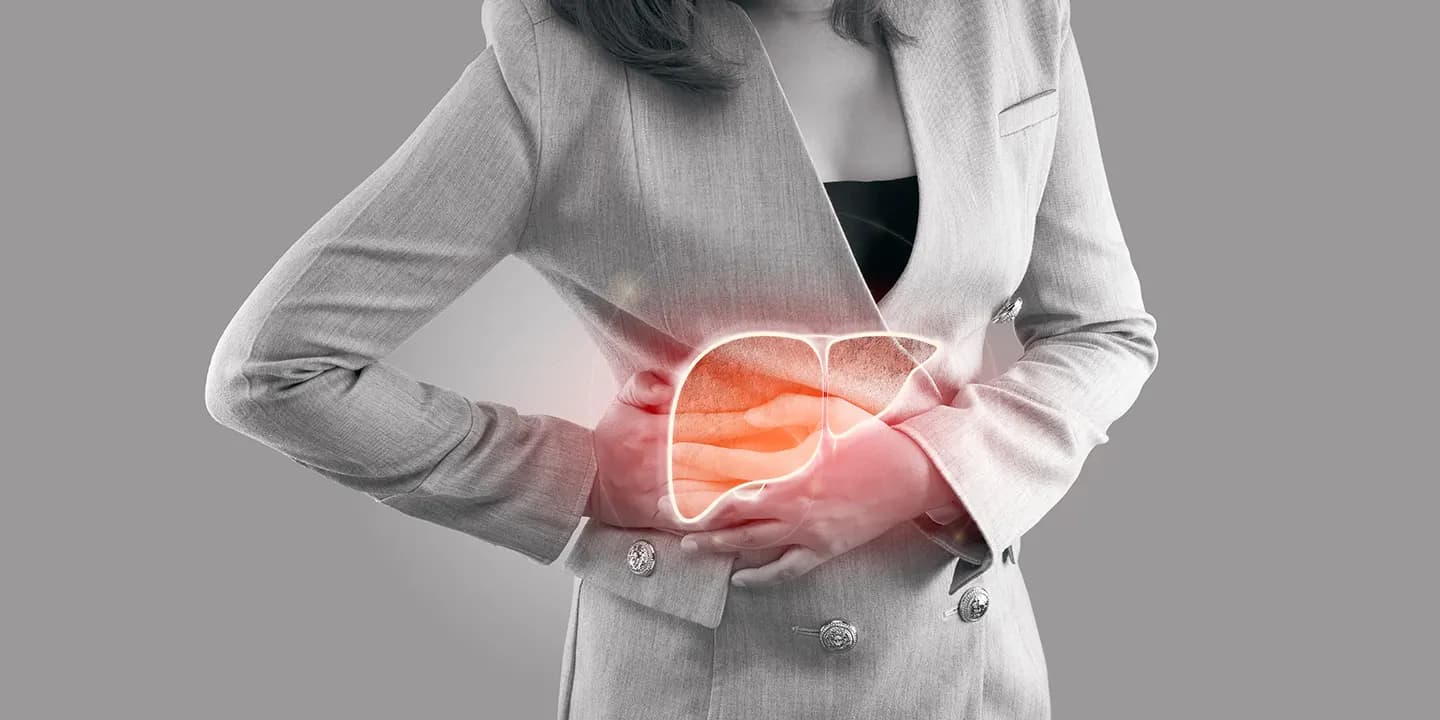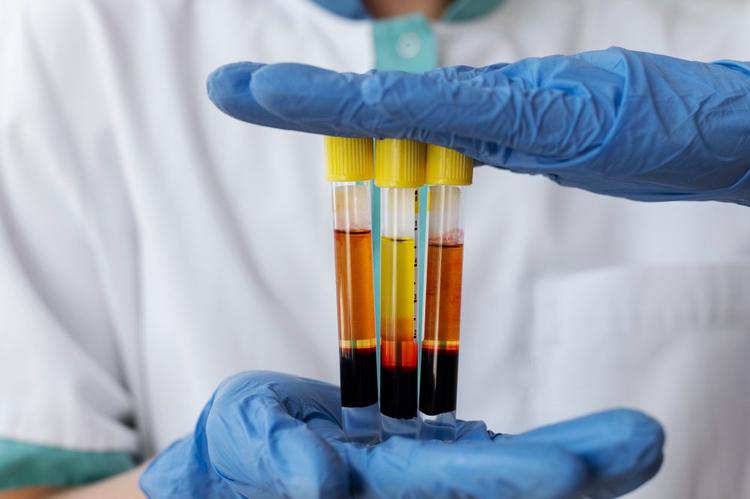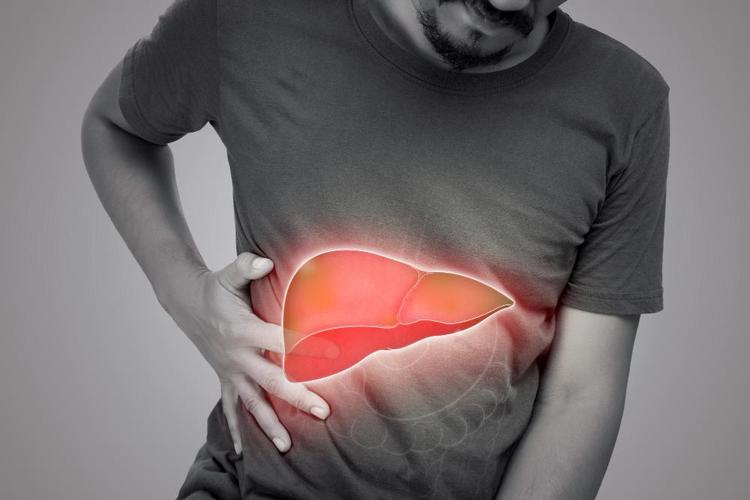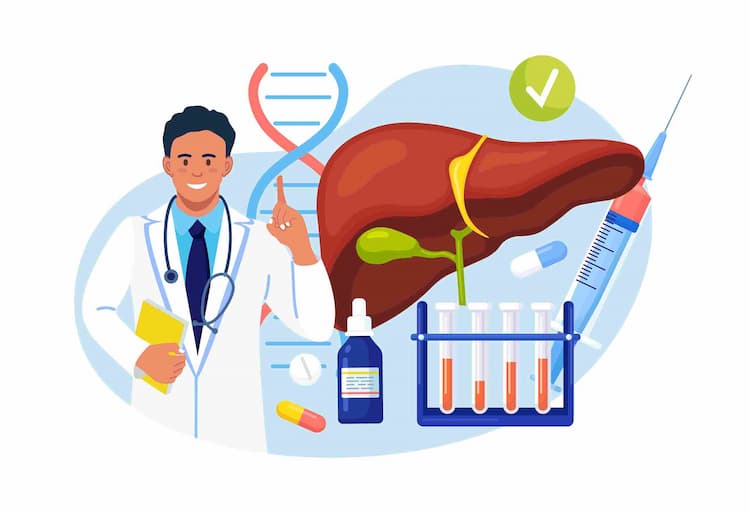Jaundice: Types, Symptoms, Causes, and Treatments

Medically Reviewed By
Dr. Ragiinii Sharma
Written By Komal Daryani
on May 15, 2022
Last Edit Made By Komal Daryani
on Mar 18, 2024

Jaundice, a condition that is marked by the yellowing of the skin and the white portion in the eyes.Excess bilirubin in the bloodstream is the primary contributor to this disease. Since bilirubin is a yellow pigment that is formed as a by-product of hemoglobin production, when it is in excess it leaves a yellowish discoloration on the patient’s skin.
In a healthy individual, the normally produced bilirubin is transferred into the liver from the bloodstream. From here, it travels down the bile duct into the small intestine and is filtered out of the body with urine or stools. However, several physiological dysfunctions can derail the process mentioned, leading to jaundice.
This article will cover everything you need to understand about Jaundice, its types, symptoms, causes, and treatment.
What are the Types of Jaundice?
There are three distinguished types of jaundice medically known:
| Type of Jaundice | Where? | What happens? |
| Pre-hepatic jaundice | Before bilirubin is sent into the liver | Happens before the bilirubin is processed with the waste products by the liver, resulting in high levels of conjugated bilirubin in the blood. |
| Hepatic jaundice | In the liver | Occurs due to liver damage or dysfunction, resulting in high bilirubin levels. |
| Post-hepatic jaundice | After the bilirubin leaves the liver | Happens after the liver processes the waste products, resulting in high conjugated bilirubin levels in the blood. |
This indicates that the type of jaundice depends on the stage where the bilirubin processing is hampered. If it is leaked into the bloodstream even before it enters the liver, it contributes to pre-hepatic jaundice. Similarly, if the bilirubin levels are stark high when it passes through the bile duct and the small intestine, it is termed post-hepatic jaundice.
What are the Causes of Jaundice?
The causes behind jaundice are dependent on the type of jaundice that the patient is diagnosed with. Commonly, when people hear about jaundice, their first instinct is to think that the disease has something to do with liver damage or dysfunction.
That isn’t always the case though. In most instances, there are a lot of other associated complications that contribute to the high bilirubin levels in the bloodstream.
We have explored all the jaundice causes in detail down below:
Pre-hepatic Jaundice
| Causes | What does it entail? |
| Malaria | Malaria is a parasitic infectious disease caused by the Plasmodium virus. It enters the bloodstream and proliferates in the liver and then damages the red blood cells, leading to high bilirubin levels in the blood. |
| Sickle cell anemia | The crescent-shaped blood cells in sickle cell anemia have a shorter lifespan compared to healthy red blood cells. This leads to heightened bilirubin in the blood. |
| Spherocytosis | Similar to sickle cell anemia, the red blood cells in spherocytosis break down quickly, leading to jaundice. |
| Thalassemia | Leads to the formation of irregular hemoglobin, which limits the red blood cells in the bloodstream, leading to jaundice. |
Hepatic Jaundice
| Causes | What it Entails? |
| Liver cirrhosis | Marked by excessive scarring of the liver tissues, leading to liver damage. |
| Viral hepatitis | Caused by a viral infection that leads to inflammation of the liver and eventual high bilirubin levels in the blood. |
| Primary biliary cirrhosis | Caused by damage to the bile ducts that transfer the bilirubin from the liver into the small intestine. The build-up of bile in the liver eventually causes damage to the liver tissues. |
| Alcoholic hepatitis | Common in heavy alcoholics, this results in damage and scarring to the liver tissues. |
| Liver cancer | Presence of cancerous cell growth in the liver, which impairs its functions and causes peaked bilirubin levels in the blood. |
Post-hepatic jaundice
| Causes | What it Entails? |
| Gall stones | Marked by hard calcium deposits that impose blockage and damage to the bile ducts. |
| Pancreatic cancer | Excessive cancerous cell growth in the pancreas leads to improper processing of bilirubin, causing jaundice. |
| Bile duct cancer | Cancerous growth in the bile duct drastically impairs the transfer of bilirubin out of the liver, leading to elevated levels in the blood. |
| Pancreatitis | Infection or inflammation in the pancreas leads to damage to the hepatic cells, causing jaundice. |
The causes and symptoms will vary in every patient, so it is important to seek immediate medical interventions to mitigate the symptoms accordingly.
What are the Symptoms of Jaundice?
Irrespective of the type of jaundice, the symptoms of the condition are pretty standard for every patient. Besides the standard yellowing of the skin and the white portions in the eyes, there are a few other symptoms worth considering.
The common jaundice symptoms include:
Yellowing of the skin and whites in the eyes – the peaked levels of bilirubin in the bloodstream cause the skin and the eye whites to turn yellow (known as jaundice eyes) because bilirubin itself is a yellowish-colored pigment.
Vomiting – most patients diagnosed with jaundice experience indigestion and unregulated bowel movement due to obstructive functioning of the liver or other parts of the GI tract. This leads to feelings of nausea and vomiting in the patient.
Dark-colored urine output – bilirubin is generally excreted out of the body via urine and stools. Although it imparts a light-yellow color to the urine in a healthy individual, excess bilirubin in the blood can cause the urine to appear extremely dark yellow.
High-grade fever – although not a very prevalent symptom, some patients with infections or pancreatitis often have a high fever with jaundice.
Sudden loss of appetite – poor digestion, paired with active infections or improper liver functions contribute to a lack of hunger in the patient. Despite the lack of appetite, eating a minimal diet is crucial for the patient’s recovery.
Discoloration of the stool – in patients with progressing jaundice, discoloration of the stools is a very prominent symptom of jaundice. Your doctor will prescribe you get a stool test to confirm their diagnosis for jaundice.
Sudden weight loss – the loss of appetite reflects on sudden weight loss in the patients. The symptom is very prominent in hemolytic jaundice, which is marked by the reduced production of bile juice. This prevents optimal absorption of nutrients from the intestine, resulting in weight loss.
Abdominal pain and discomfort – since the liver is subjected to a lot of stress and damage during jaundice, experiencing pain around the abdomen or the stomach region is a very common symptom of jaundice in patients. If you are experiencing pain around the area where the liver is, ensure that you seek immediate medical consultation to rule out any complications.
Most jaundice patients also experience extreme exhaustion and fatigue in addition to the above-mentioned symptoms.
Why Do Newborns Get Jaundice?
Jaundice in newborns is a lot common, accounting for around 60% of newborns born each year. The symptoms take 48-50 hours to develop in the newborn and are a treatable condition.
One of the primary causes is because the red blood cells break down a lot quicker in newborns, leading to excess production of bilirubin in their blood. Also, since the liver in the newborns is still developing after their birth, it has a hard time filtering the excess bilirubin out of the system, leading to jaundice.
Since the condition is very common, doctors highlight that the symptoms recover on their own in most babies. However, other newborns with extremely high bilirubin levels might need medical intervention, especially with phototherapy or blood transfusion.
If your newborn develops jaundice after their birth, chances are that your doctor will test for Crigler-Najjar syndrome. In this condition, the body has impaired enzymatic functions that process the produced bilirubin.
How is Jaundice Diagnosed?
The diagnosis of jaundice is often determined by the physical appearance of the patient first. Your doctor will look for skin discoloration or yellowing of the eye whites as a standard sign.
Once your doctor has their suspicion concerning jaundice, they will then move on to further Jaundice test to determine the extent of damage, the type of jaundice, etc.
Some of the common modes of diagnosis include:
Urinalysis – a standard urine test that measures the levels of different waste products, including levels of bilirubin to test the liver function of the patient.
Blood tests – routine blood tests like complete blood count (CBC), liver function test, and antibody tests are very common in jaundice patients. It gives a complete understanding of the different components present in the blood.
Imaging tests – if the jaundice is induced by liver damage, your doctor will prescribe imaging tests like MRI, ultrasound, or CT scan to get a comprehensive look into the liver. Imaging tests also rule out the possibility of cancer in the liver.
Endoscopy – involves the insertion of a lighted tube through an incision to assess the liver and its surrounding areas. The procedure also extracts a small piece of the damaged liver tissue for biopsy to check for possibilities of cancer.
HIDA scan – although not the most common type of diagnostic test, a HIDA scan finds blockages in the liver, bile ducts, gall bladder, and the small intestine. It helps with the diagnosis of hepatic or post-hepatic jaundice.
Depending on the test results and a confirmed diagnosis, your doctor will then move ahead with the treatment.
How is Jaundice Treated?
The treatment for jaundice depends on the type of jaundice the patient is diagnosed with. Besides treating the symptom, the doctors also have to address the cause and treat it as well.
For easy reference of jaundice treatment, we have sorted them in the table below:
| Type of Jaundice | Treatment Options |
| Hemolytic or Pre-hepatic Jaundice | -Taking iron supplementation-IV rehydration
-Blood transfusion -Folic acid supplementation -Spleen removal surgery (severe cases) -Bone marrow replacement (severe cases) |
| Hepatocellular or Hepatic Jaundice | -Antiviral medications for liver infections-Vaccination and steroid medication for hepatitis
-Low protein diet in liver cirrhosis -Bile lowering medications in biliary cirrhosis -Antihistamine medications for itching -Chemotherapy, radiation therapy for liver cancer |
| Obstructive or Post-hepatic Jaundice | -Surgical methods to remove blockage or obstructions-Medications or surgery to dissolve or extract gall stones
-Kasai method to remove affected bile ducts -Medical or surgical interventions to reduce pancreatic inflammation |
Discussing the treatment options at length with the doctor is important. This enables the patients to prepare themselves for the coming days and modify their diet and lifestyle to support their recovery.
What is the Diet for Jaundice?
Since the liver is already severely affected (and damaged) due to jaundice, there are several dietary limitations in place. As your liver recovers from the impacts of the disease, you need to give it some time to relax and not work in overdrive.
Eating a diet of low complexity and low protein foods is advised during jaundice. Also, excessive salt consumption is prohibited for the patient. Jaundice patients also need to keep their hydration in check.
Frequently Asked Questions
-
Can jaundice be cured?
Jaundice is a treatable disease in most cases. However, in patients with end-stage liver failure or liver cancer, the only treatment option, in that case, is a liver transplant.
-
Is sunlight good for jaundice?
The use of sunlight or phototherapy as a treatment for jaundice is common in neonatal jaundice.
-
Which plant can cure jaundice?
Some of the different types of medicinal plants used in jaundice treatment include Boerhavia diffusa L., Tinospora cordifolia (Willd.) Miers, Phyllanthus amarus Schumach Saccharum officinarum L., etc.
Conclusion
Although jaundice can be an alarming condition to battle and completely recover from, with proper treatment and medical interventions, recovery is quick and effective. Getting a comprehensive idea about the underlying cause is crucial, especially for targeted treatment. If you notice sudden yellowing eyes and the skin, ensure that you seek immediate medical consultation.



